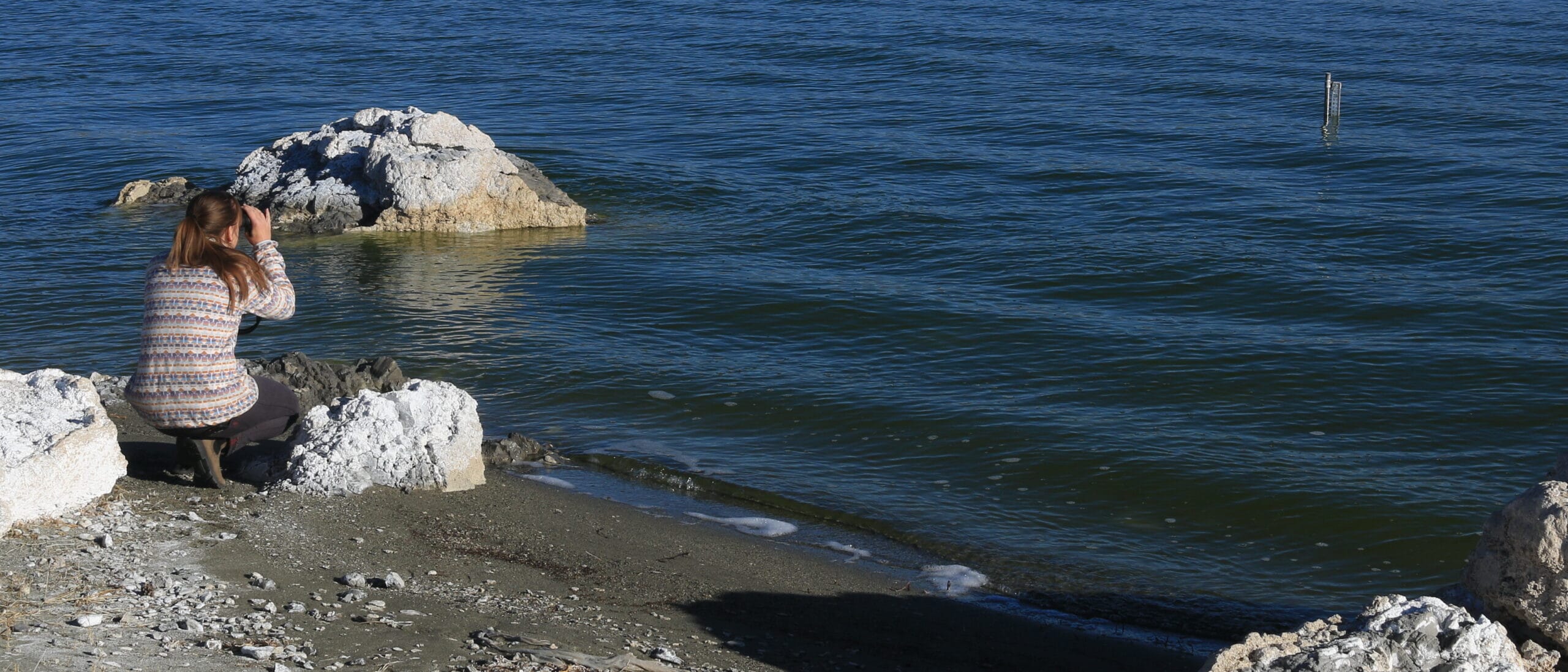
This morning Angelenos and Los Angeles Times readers around the world woke up and saw Mono Lake above the fold in an article with the headline, “Push to tame dust from lake.” The story is one that those following Mono Lake closely know well: Mono Lake is not rising on schedule, and it’s a serious problem for the future of millions of migratory and nesting birds, the public, and a unique and beloved ecosystem.
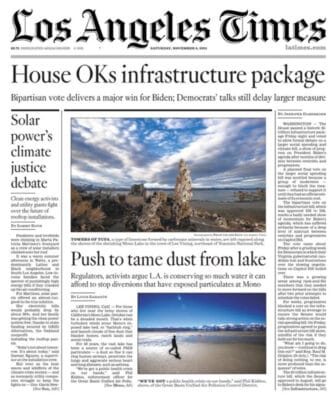
The LA Times article chronicles the recent actions on the part of the Great Basin Unified Air Pollution Control District to call attention to one of the critical problems of a persistent low lake level.
“We’ve got a public health crisis on our hands,” grumbled Phil Kiddoo, enforcement officer for the Great Basin Unified Air Pollution Control District, which oversees a battery of monitoring devices that help chronicle the dust storms rolling off Mono Lake this time of year … Now, after two years of punishing drought, Mono County conservationists, tribal leaders and air regulators have launched a campaign to raise the level of the lake. They hope to accomplish this by stopping the Los Angeles Department of Water and Power from diverting water from the lake’s feeder streams. The campaign hinges on the novel argument that Los Angeles can afford to stop diverting water here because Angelenos are now experts at conserving water.
—LA Times article, “Push to tame dust from lake” (Nov 6, 2021) by Louis Sahagun
Mono Lake’s very low level simultaneously threatens all of the reasons people love this unique wildlife habitat. In addition to the hazardous dust storms, one of the world’s largest California Gull colonies is imperiled as the nesting islands becoming landbridged to the shore, and the unique lake ecosystem itself provides less food for the millions of migratory birds that rely on it. The Mono Lake Kootzaduka’a Tribe has raised spiritual and cultural concerns about the impairment of the lake that is central to their lives and heritage. The solution to all these concerns is the same: raise the lake 12 feet to the state-mandated management level.
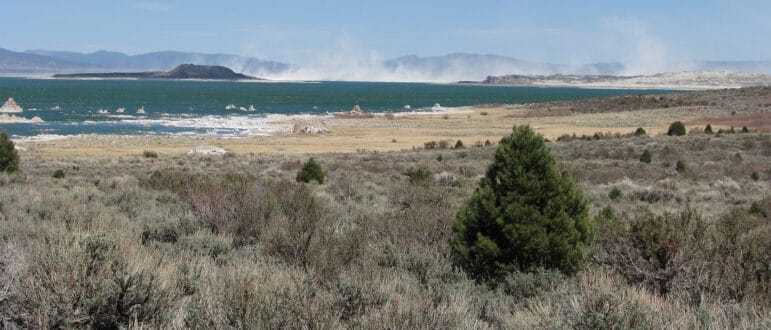
Maureen McGlinchy, a hydrology modeling specialist for the committee, visits the site at least once a month to gather all the information with binoculars, water sample bottles, a notebook and a gadget that measures wind speed, ambient temperature and relative humidity. On Oct. 26, she reported the lake’s surface elevation to be 6,379.85 feet above sea level, or 12.15 feet below the target level. “If recent hydroclimate trends continue into the future and L.A. continues to divert water from the area, Mono Lake’s recovery will remain stalled,” she said. “If, however, L.A. stops its diversions, Mono Lake would reach the target level within 20 years.”
—LA Times article, “Push to tame dust from lake” (Nov 6, 2021) by Louis Sahagun
Mono Lake’s protection is already required, but the journey to raise the lake to that healthy level isn’t on schedule, and at this point the consequences are dire. With extended droughts and other impacts from climate change increasing it is essential to raise the lake quickly. We are all in this together, and just as Los Angeles is transforming to be resilient in the face of climate change, so too must we restore Mono Lake’s capacity to survive for future generations.
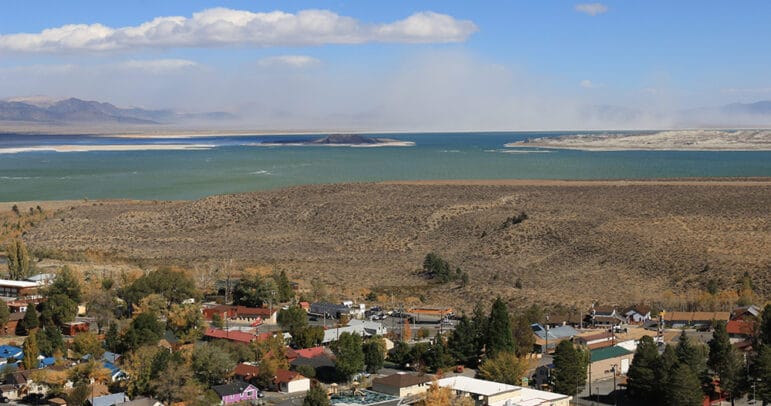
In order to read the full article you need to register for a free LA Times account, which gives you access to a handful of articles for free on a seven-day cycle, or, better yet, support this sort of news reporting and subscribe for full access.
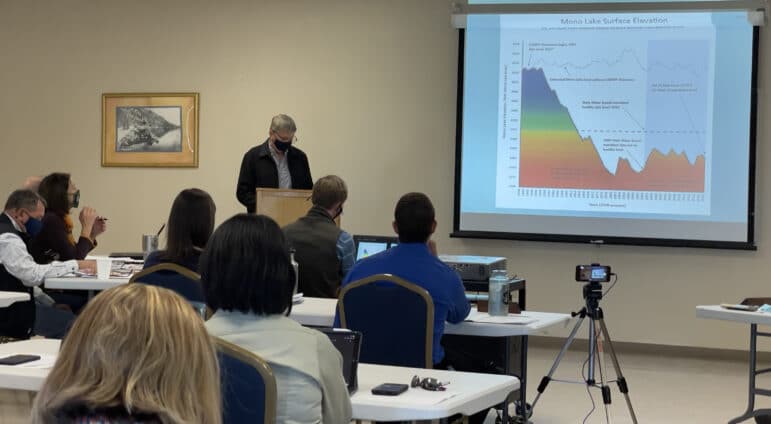
For more on this critical issue see the posts Mono Lake not rising on schedule and Covering up the air quality problem at Mono Lake: Just add water.
Top photo by Bartshe Miller: Maureen McGlinchy, Mono Lake Committee Hydrology Modeling & Membership Specialist reads the lake level.
